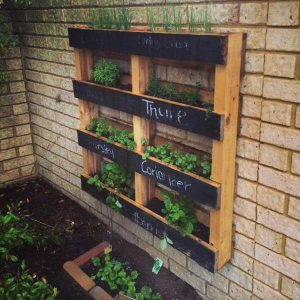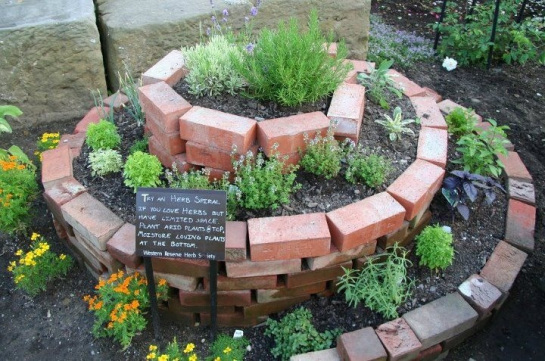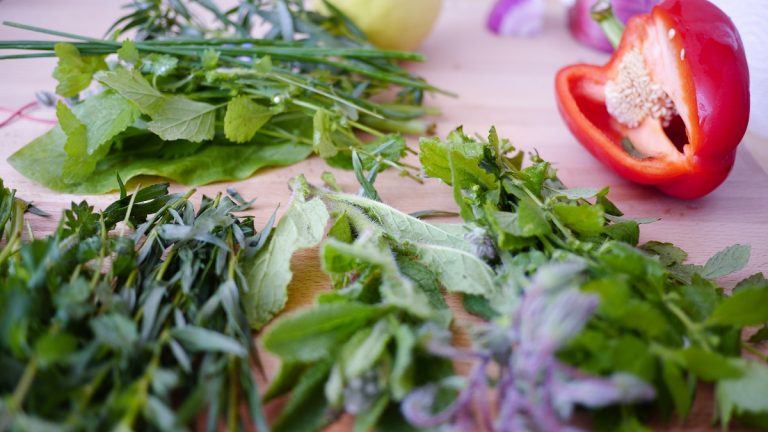Imagine floating past your barbeque guests, scissors and basket in hand. You’re heading to your thriving kitchen garden. You’ll wander and snip just the right amount of fresh culinary herbs to go straight into beautifully prepared salads. Spring is here and it’s a great time to make this kitchen garden dream real in time for summer!
Save money on your weekly grocery shop
On average, it costs around $4.00 to buy a bunch of fresh herbs that might last in your fridge, if well stored, for a week. If you’re about to embark on creating a dish that calls for three different types of herbs, that’s a $12.00 ingredient already!
Chances are, you’ll only need to use a portion from each bunch. The budget and waste savvy among us will make sure to plan the rest of their meals to use up the fresh herbs. The reality is, left over store bought fresh herbs end up in the compost.
At a bulk discount garden store, you can often buy culinary herb seeds for as little as $2 a packet. That $2 will go a long way, provided you’ve prepared your kitchen garden beds well, and are committed to keeping up the irrigation.
Ideas for kitchen herb garden beds
There are numerous vessels you can use to grow your herb garden. The secret is in the preparation of the garden bed and ensuring that there is enough drainage for excess water to go.
Here are just a few ideas for interesting herb planters:

- decorative garden pots in a range of shapes and sizes
- hanging planters
- concrete building blocks – the ones with the big dual holes in them
- large empty tin cans with their paper or plastic labels removed
- old decorative tins
- a hanging shoe organiser with simple plastic pots to house the herbs
- half oak wine barrels
- an old iron wash tub or bath
- a traditional garden bed, or series of garden beds
- a vertical garden planting system
- a spiral garden structure
- raised garden planters on caster wheels
- herb pots specifically designed for growing herbs.
Visit Pinterest for thousands of inspirational ideas for DIY Herb Gardens.

How to prepare your herb garden bed
The most foolproof advice for herb garden preparation will come from your closest local plant nursery. A local horticulturalist employed by the nursery will be intimately familiar with the soil types and climate in your local area. They’ll offer effective advice on whether you need to turn in some extra garden soil or top soil, or simply prepare your existing soil with good quality organic matter.
The basic principles for preparing your herb garden bed or pots are summarised below.
Pick an herb friendly location
Most summer herbs prefer around 6 hours of sunlight daily, so find a spot to suit. You may have to spend a day observing your back yard or courtyard to work out which area is going to deliver best on this requirement.
Prepare the soil
Remove all weeds, plant roots and grasses. If you’re using a traditional garden bed or raised garden bed, grab a shovel and turn over the soil to a depth of 20 centimetres or more.
Enhance the nutritional value of the soil by turning in a soil improver recommended by your local plant nursery.
If you choose to use seeds rather than seedlings, use a specially prepared seed raising mix which is lighter and free draining, to enable new sprouts to push through more readily, improving their chance of survival. You can make your own, and here is one seed raising mix recipe from Organic Gardener.
Choose the right herbs for your location and season
The Diggers Club, based in Victoria, is a national source of knowledge and advice when it comes to gardening in Australia.
The Diggers Club climate map is a great way to identify your ‘growing zone’. Most of New South Wales for example is a ‘Warm Zone’ apart from around Armidale which is classified as a ‘Cool Zone’.
These zones are classified based on the number of weeks each year that the soil temperature is above 15 degrees Celsius, the optimal soil climate for plant growth.
When you pop in to your local nursery, you’ll find all the culinary herb seed packets refer to ideal sowing zones and the best time to plant them accordingly.
Sow, plant and irrigate well
Once you’ve chosen a good spot and have prepared the soil well, planting and watching them grow (with regular watering), is the fun part.
If sowing seeds, follow the directions on the packet to guide you on how far apart to space the seeds, and how deep under the surface of the soil. Once planted, you’ll need to give them a decent but light sprinkle of water.
If planting out seedlings, start by watering them first. Then remove them, soil and all, gently from their containers. You may have to tap the container gently but firmly on around the sides, to coax them out with minimal damage to their root systems.
Carefully separate out each seedling, taking care to gently shake soil from tangled roots to separate individual plants. Check with your seedling supplier as to the optimum spacing and depth for planting.
Then, stand back and admire your work! Take some photos. Water your herb garden regularly so that the soil stays moist but not saturated. And take some more photos when family and friends are harvesting your homegrown produce.
Herbs to plant in Spring ready for Summer harvesting
The ABC’s Organic Gardener offers a handy Spring-Summer planting guide that covers all the Australian planting zones. As an example, in New South Wales’ mostly ‘Warm Zone’ October is a good time to sow the following culinary herb seeds:
- basil
- capsicum or chillies
- chives
- coriander
- dill
- fennel
- ginger
- Mediterranean herbs such as marjoram, oregano, rosemary, sage and thyme
- mint.
Of course, the number one rule for a good harvest is to only plant herbs that you’ll want to eat or serve to family and friends. A common beginners mistake is to plant EVERYTHING and end up spending way more than necessary, and with loads of waste or gifts from the garden for visitors.
Happy sowing!
References and helpful resources
Choice magazine: Starting a vegetable garden. Save money by growing your own.
Sustainable Gardening Australia
Main Photo by Thomas Rehehäuser on Unsplash
Image of vertical garden from 99 Pallet Ideas
Image of spiral herb garden from Grange Garden



